#Parabolic Leaf Springs
Explore tagged Tumblr posts
Text
A brief look into the features and usefulness of parabolic leaf springs

Parabolic leaf springs are considered a very advanced type of leaf spring. These leaf springs have numerous features that are an improvement over the design of the conventional leaf springs. They offer better flexibility, enhanced ride quality, and lighter weight. The parabolic leaf springs are used expansively in buses, trucks, SUVs, and other off-road vehicles.
Depending on the type of vehicle or car you are using, you need to get suitable parabolic leaf springs that can further emphasize its performance.
There are distinct advantages of using parabolic leaf springs that you won’t get with other types of leaf springs. First, they typically ensure a smooth experience for the people riding in the vehicle. Since the inter-leaf friction is almost zero with the parabolic leaf springs, people can always enjoy a less bumpy ride with them. The other benefit of using these leaf springs is that they are much lighter than conventional leaf springs. This helps to advance the fuel efficiency of the vehicle.
Using parabolic leaf springs is also something you should consider when you want to advance the flexibility of the vehicle. These leaf springs are well-suited for cars and vehicles with off-road applications. Since these springs can reduce the overall stress concentration, they can enhance the lifespan of the components. The simple design of the spring means that there are fewer leaves involved, which reduces the cost and need for maintenance. With the tapered construction of the parabolic leaf springs, you will have better shock absorption features with enhanced elasticity.
Another reason vehicle owners love using these parabolic leaf spring is that they offer a better stress distribution along the entire spring length. This helps to improve the durability of the components and reduce material fatigue. The leaves of the springs do not rest directly on each other. Instead, they are separated from one another by spacers. This is a reason why, they can remove friction and provide a better riding experience. Such factors make the parabolic leaf springs highly coveted in the heavy vehicle industry.
0 notes
Text
Ashok Leyland BOSS Series: India’s Top Choice for Construction Transport
The Ashok Leyland BOSS series leads the construction transportation sector with its seven BS6 LCV models, including six trucks and one tipper. Equipped with i-Gen6 technology, this series ensures seamless navigation and high performance. All models run on diesel, supported by six robust tyres. Moreover, the BOSS series prioritizes driver comfort with its spacious sleeper berth, hydraulic tilt cabin, LED cabin lamp, and openable quarter windows. For buyers interested, the Ashok Leyland BOSS price varies based on the model and configuration, ensuring value for money.
Applications of Ashok Leyland BOSS Trucks
The Ashok Leyland BOSS series proves its reliability in diverse industries. Its robust design and adaptability make it ideal for applications such as construction, mining, cement transportation, e-commerce, and cold storage. It is also widely used for white goods delivery, poultry, fisheries, parcel services, and auto carrier operations.
Ashok Leyland BADA DOST Pickup: High-Performance Utility
The Ashok Leyland BADA DOST exemplifies advanced engineering and high performance. Its aerodynamic design enhances fuel efficiency, while the spacious loading deck ensures ease in transporting goods.

Engine and Performance
The BADA DOST features a 1.5-liter turbocharged engine with 80 hp power and 190 Nm torque. This robust configuration supports its utility in heavy-duty tasks. The vehicle’s mileage ranges from 13 to 15 km/l, complemented by a 50-liter fuel tank, making it a practical choice for long-range operations.
Suspension and Brakes
The BADA DOST ensures stability and safety with its advanced suspension system—parabolic and semi-elliptic leaf springs—and hydraulic vacuum-assisted brakes. This setup, combined with parking brakes, offers enhanced control across all terrains.
0 notes
Text
Force Urbania 13 Seater Van on Rent in Delhi

13 seater Force Motors Urbania van is the most luxurious tourist vehicle in India with reclining push-back seats, ample leg space and armrests on each passenger seat. Not just that, Urbania Van has individual AC vents, reading lamps and mobile USB charging points.
With large 16-inch tubeless radial tyres, front independent suspension and rear parabolic leaf spring suspension, the 13+1 seater Force Urbania van offers the utmost passenger comfort during journeys. Hire 13 Seater Urbania Van on rent in Delhi for a luxurious trip.
Urbania 13 seater price per km for outstation is Rs 30 per Km with Rs 700/day driver allowance. The total cost for the outstation tour includes state tax, toll tax excluding parking fees and other elements. For Delhi private tour, the full-day rental price of 12 or 13 seater Urbania Van is Rs 4000 for 80 km and 8 hours.
0 notes
Text
Leaf spring
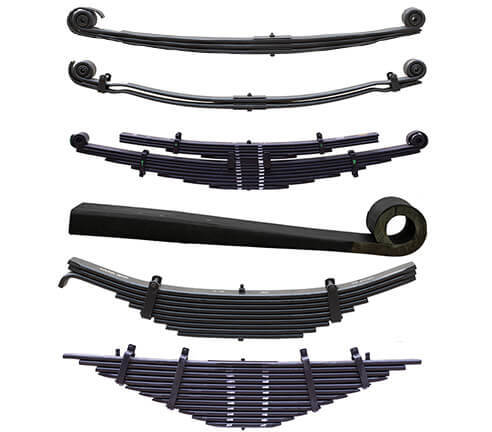
Sonico Leaf Spring product range includes parabolic, conventional, bogie, trailer springs and much more. It caters to unique customer requirements . For more information about Leaf springs please visit us : https://www.sonicoleafsprings.com/leaf-springs.html . #LeafSpring #LeafSpringManufacturer #LeafSpringExporter #Sonicoleafsprings .
0 notes
Text
0 notes
Text
The Power of Tata Motors' Extra Heavy Commercial Vehicles: PRIMA 2528.K E III and PRIMA LX 3338.K E III
Tata Motors, a leader in the automotive industry, continues to push the boundaries of innovation and performance with its range of extra heavy commercial vehicles. Among these, the PRIMA 2528.K E III and PRIMA LX 3338.K E III stand out as exemplary models, designed to meet the demanding needs of construction, mining, and other heavy-duty applications. In this article, we delve into the features, performance, and benefits of these powerful vehicles.
PRIMA 2528.K E III: A Robust Performer
The PRIMA 2528.K E III is a versatile and robust tipper truck, engineered to handle the most challenging terrains and workloads. It is powered by a Cummins ISBe 6.7L engine, delivering an impressive 267 horsepower and a peak torque of 970 Nm. This engine is known for its durability, fuel efficiency, and compliance with BSIII (Bharat Stage III) emission standards, ensuring both power and environmental responsibility.
Key Features and Benefits:
Strong Chassis and Suspension: The PRIMA 2528.K E III features a heavy-duty chassis and a robust suspension system, providing excellent stability and load-bearing capacity. The parabolic leaf spring suspension at the front and the bogie suspension at the rear ensure a smooth ride even on rough terrains.
Superior Payload Capacity: With a gross vehicle weight (GVW) of 25,000 kg, this tipper truck offers a substantial payload capacity, making it ideal for transporting heavy materials like sand, gravel, and construction aggregates.
Enhanced Driver Comfort: The cabin of the PRIMA 2528.K E III is designed with driver comfort in mind. It features an ergonomic layout, air conditioning, adjustable seats, and advanced infotainment options, reducing driver fatigue and improving productivity.
Advanced Safety Features: Safety is a priority in the PRIMA 2528.K E III, which includes features like ABS (Anti-lock Braking System), power steering, and a robust braking system. These elements contribute to better control and safety, especially in challenging driving conditions.
Efficient Drivetrain: The truck is equipped with a 9-speed gearbox, allowing for optimal power distribution and fuel efficiency. This makes it suitable for a variety of applications, from urban construction sites to remote mining locations.
PRIMA LX 3338.K E III: The Epitome of Strength and Reliability
The PRIMA LX 3338.K E III is another standout model in Tata Motors' extra heavy commercial vehicle lineup. This tipper truck is designed for the most demanding tasks, offering exceptional performance, reliability, and durability. It is powered by a Cummins ISLe 8.9L engine, producing 370 horsepower and a peak torque of 1550 Nm, providing the muscle needed for heavy-duty operations.
Key Features and Benefits:
High Performance Engine: The Cummins ISLe engine in the PRIMA LX 3338.K E III ensures powerful performance with high fuel efficiency. This engine is also compliant with BSIII emission norms, balancing power with environmental considerations.
Durable Build: The PRIMA LX 3338.K E III features a reinforced chassis and a robust suspension system, designed to handle extreme loads and rough terrains. The heavy-duty bogie suspension at the rear and the parabolic leaf spring suspension at the front provide stability and durability.
Exceptional Payload Capacity: With a GVW of 33,000 kg, the PRIMA LX 3338.K E III offers one of the highest payload capacities in its class. This makes it an ideal choice for industries like mining, construction, and infrastructure development.
Driver-centric Cabin: The truck's cabin is designed for maximum comfort and convenience. It includes features like air conditioning, an adjustable steering wheel, ergonomic seating, and advanced infotainment options, ensuring a comfortable and productive driving experience.
Advanced Safety Systems: Safety features in the PRIMA LX 3338.K E III include ABS, a robust braking system, and power steering, all contributing to better control and safety on the road.
Versatile Drivetrain: The 9-speed gearbox in the PRIMA LX 3338.K E III ensures efficient power distribution, making it suitable for various heavy-duty applications. Whether it's transporting construction materials or navigating through mining sites, this truck delivers exceptional performance.
Conclusion: Driving Progress with Tata Motors
Tata Motors' PRIMA 2528.K E III and PRIMA LX 3338.K E III exemplify the company's commitment to delivering high-performance, reliable, and efficient extra heavy commercial vehicles. These trucks are designed to meet the rigorous demands of industries such as construction and mining, offering robust performance, superior payload capacity, and advanced safety features.
By investing in continuous innovation and leveraging cutting-edge technology, Tata Motors ensures that its vehicles not only meet but exceed industry standards. The PRIMA 2528.K E III and PRIMA LX 3338.K E III are testament to Tata Motors' dedication to quality, performance, and customer satisfaction, making them the preferred choice for businesses that require reliable and efficient heavy-duty transportation solutions.
In summary, the PRIMA 2528.K E III and PRIMA LX 3338.K E III are not just trucks; they are powerful tools that drive progress and efficiency in the most demanding environments.
0 notes
Text
It goes without saying that when it comes to transport for our loved ones, our children, there can be no half measures regarding safety. Enter the Tata LP 709: Starbus skool is a unique, beautiful, and comfortable 36/40-Seater Bus specially designed and built for school transport. Manufactured at Tata's renowned Marcopolo plant in Dharwad, this bus is engineered with one priority: The welfare of your students is something that should concern you a lot.
Safety Beyond Compare
The Starbus School is more than a bus! Remarkably, each built-in feature takes into consideration the protection of children from danger. Air brakes ensure that vehicles come to a halt in case of an emergency, by giving a firm braking power. Window guard rails reduce situations where the children fall accidentally and the anti-skid flooring ensures the students do not lose balance easily. Anti-roll bars also provide an added measure of security, therefore, the Tata bus featured in this article is one of the safest models for schools and colleges.
Comfort Meets Efficiency
It was designed on LP 709 chassis and its suspension system is made of parabolic leaf springs both at the front and rear. Students come in renewed, eager to start the day and attend classes. You can take 36 passengers with a 2 by 2 design or 40 passengers with a 3 by 2 design, and it is all bench-like for easier cleaning. Equipped with a 4SPCR engine, the car comes with a power output of 85 HP at 2800 rpm and 250 Nm torque, making them arrive on time. Besides, the new Arya has class-beating Tata LP 709 mileage; it’s as friendly to your pocket as to the planet.
School Bus Special Offers available at Trucksbuses
At Trucksbuses, we stand for the protection of children's right to safe education by ensuring no child suffers from a terrible experience en route to school. That's why this month, we're offering unbeatable discounts on the Tata LP 709: Starbus Skool is a creative concept that synergizes two ideas into one vehicle design and therefore grabs the attention of the audience. This is made possible due to the long-term relationship we have fostered with Tata Motors, which enables us to offer you affordable prices that other dealers can hardly match. For hassle-free and transparent pricing, select the ‘Check On Road Price’ option to get an accurate price suitable for your area with no additional charges.
We understand that buying a school bus is a significant decision. Our expert team is here to guide you, explaining features like the 3-year/3-lakh km driveline warranty and 1.5-year/1.5-lakh km body warranty. With a service interval of 20,000 km and Tata's vast network, maintenance is hassle-free.
Want to give your students the safest, most comfortable rides? Visit trucksbuses.com today. Click "Check Discount Offer" to access this month's incredible deals on the Tata LP 709: Starbus Skool. With us, you're not just buying a bus; you're investing in the safety and future of your students. Trust Tata, trust trucksbuses.com!
0 notes
Text
Noisy parabolic leaf springs
Forum: General 4x4 Discussion Posted By: zimcruiser Post Time: 2024/05/13 at 03:57 PM http://dlvr.it/T6pxhd
0 notes
Text
Toyota Hilux J trail rig 💪
Di pa nakikita ni boss unit niya, set up agad.
Toughdog 9 way adjustable foamcell shocks
Hardrace UCA
Dobinsons Parabolic leaf springs
SCS Blaze 10
BFGoodrich ko2
ARB UVP
ARB Sidestep with endcaps
ARB Summit raw rear bar
ARB Differential air breather
.
For Inquiries
Call / SMS / Viber / Whatsapp
📱0917-8525158
☎️02-7002-1066
55 William shaw st, corner biglang awa St,
Brgy 94, Caloocan City
beside Topup Cover Philippines / BF Film
Waze: North Side Auto Garage
#northsideautogarage
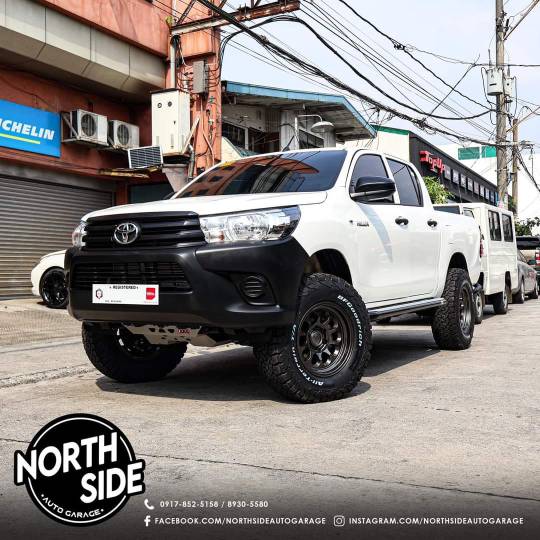
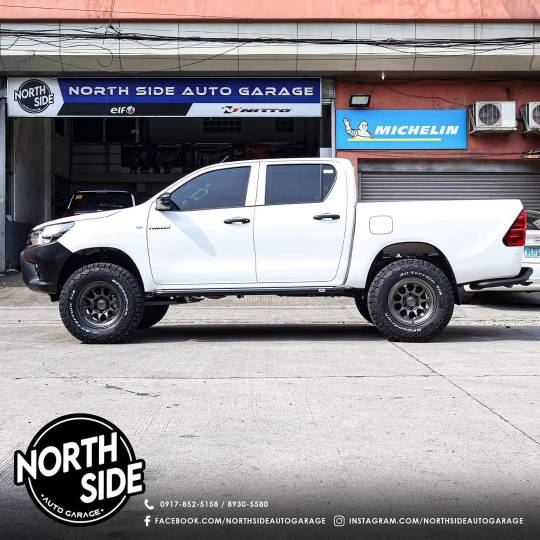

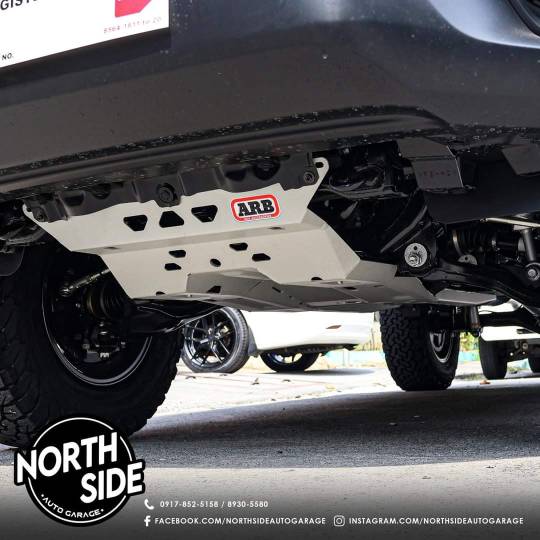
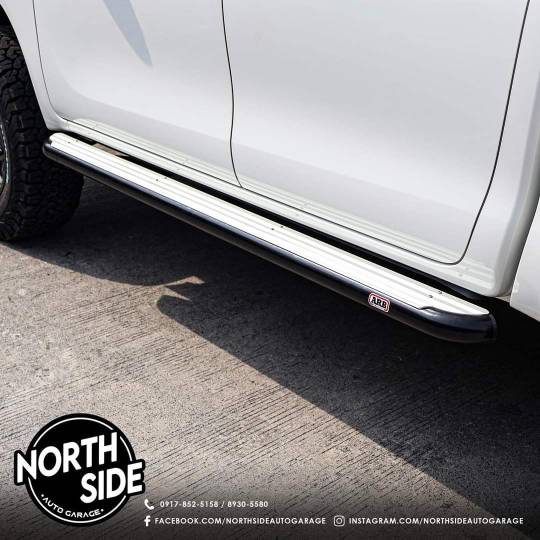
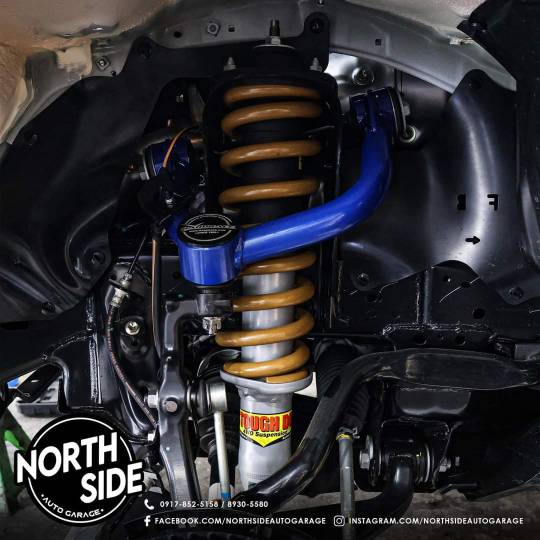

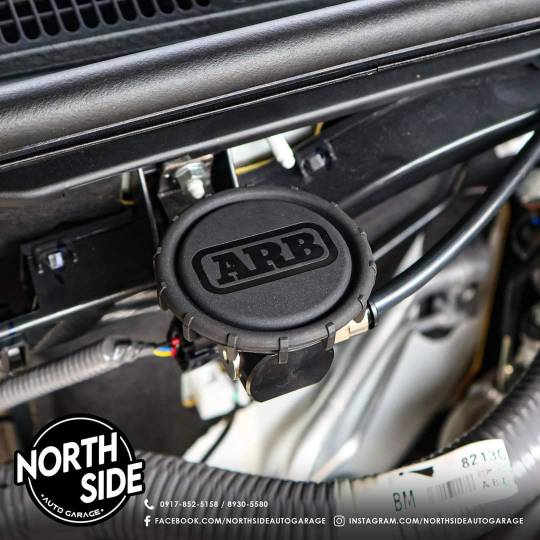
1 note
·
View note
Text
Exploring the Growth of the Automotive Leaf Spring Market
Key Highlights
The automotive leaf spring market was valued at USD 5,992.1 million in 2023, and it will rise to USD 8,252.1 million, powering at a 4.8% compound annual growth rate, by 2030.

The growth of this industry is because of the increasing requirement for commercial vehicles, coupled with the rising need for comfort while traveling or driving in them. The development of the e-commerce industry globally is likely to boost the need for light commercial automobiles, which would, in sequence, drive the demand for leaf springs worldwide.
Various e-commerce websites as well as postal services utilize heavy-duty automobiles, which impacts the automotive leaf spring industry directly. Robust and reliable vehicles that are lightweight are required for logistics applications. Leaf springs are suitable for delivery trucks and vans due to their large capacity and strong construction.
Because of the strict emission rules, fuel efficiency is the major emphasis for vehicle manufacturers as customers demand greener as well as more fuel-efficient automobiles.
They are in continuous demand due to the increasing acceptance of pickup trucks and SUVs, which are known for their towing and off-road capacities. The improvements in technologies are making them more rugged, cost-effective, and lighter than other vehicles.
Market Analysis
The metal category led the industry in 2023, with approximately 70% share. Because of their great strength, metals can withstand the loads and strains that automobiles—particularly trucks and SUVs—place on their leaf springs. Thus, they are ideal for applications that need strength and durability.
The parabolic category accounted for the largest share in 2023, of 40%, primarily because its curved figure evenly distributes the weight. This leads to more comfortable as well as smoother rides.
Because of the strict fuel economy rules, the weight reduction ability of the parabolic type makes it ideal for automotive manufacturers.
The commercial vehicles category was the largest contributor to the industry in 2023, with approximately 75% share, because of the high demand for durability and ruggedness in them.
For commercial vehicles, their overall price is the main reduction that leaf springs provide, while delivering greater durability and strength with improved fuel efficiency.
The original equipment manufacturers (OEMs) category led the industry in 2023, with approximately 80% share. This is because automobile manufacturers generally purchase leaf springs and various other components in bulk.
Due to their ability to negotiate large discounts with leaf spring providers, their costs per unit are lower compared to those of aftermarket sellers.
APAC accounted for the largest share in the industry in 2023, of approximately 50%. Moreover, the regional industry will also advance at the fastest rate, of 5.3%, in the years to come. This is because of the surging adoption of commercial vehicles by e-commerce firms and the large volume of vehicles manufactured in the region.
Since vehicles comprising leaf springs are manufactured cheaply, this price-sensitive region outperforms other regions.
The industry is competitive because of greater off-road capacity, strict government guidelines, and various applications of leaf springs. Players normally perform better in price-sensitive regions, which expands the possibility of technological advancements in this industry.
Source: P&S Intelligence
#Automotive Leaf Spring Market Share#Automotive Leaf Spring Market Size#Automotive Leaf Spring Market Growth#Automotive Leaf Spring Market Applications#Automotive Leaf Spring Market Trends
1 note
·
View note
Text
The Engineering Behind Parabolic Leaf Springs: How They Work

Parabolic leaf springs are a sophisticated advancement in vehicle suspension technology, offering enhanced performance and comfort compared to traditional leaf springs. Their unique design and engineering principles are pivotal in achieving superior ride quality, load distribution, and durability. This article explores the engineering fundamentals behind parabolic leaf springs, how they function, and the benefits they offer.
Understanding Leaf Springs
To appreciate the engineering of parabolic leaf springs, it's essential first to understand the basic function and design of traditional leaf springs. Conventional leaf springs consist of multiple layers of steel, known as leaves, stacked together in a linear fashion. These leaves are clamped together and mounted to the vehicle's axle, where they act as a spring by flexing under load.
The primary roles of traditional leaf springs include:
1. Load Bearing: They support the vehicle's weight and any additional cargo.
2. Shock Absorption: They absorb road shocks and distribute forces to prevent excessive bouncing.
3. Stability and Control: They help maintain axle alignment and vehicle stability.
Despite their effectiveness, traditional leaf springs have limitations, such as limited ride comfort and reduced flexibility under varying loads.
The Evolution to Parabolic Leaf Springs
Parabolic leaf springs address many of the shortcomings of traditional leaf springs through their innovative design. Unlike linear leaf springs, parabolic leaf springs have a curved shape that resembles a parabola, which introduces significant changes in how they perform.
Design Characteristics of Parabolic Leaf Springs:
1. Parabolic Curve: The key feature of parabolic leaf springs is their curved, parabolic shape. This design contrasts with the straight or slightly curved shape of traditional leaf springs. The curve allows for a more gradual transition of forces along the length of the spring.
2. Variable Thickness: Parabolic leaf springs typically have varying thickness along their length, being thicker at the center and tapering off towards the ends. This design enables the spring to offer a progressive response to loading, improving both load support and ride comfort.
3. Reduced Leaf Count: Parabolic leaf springs usually consist of fewer leaves than traditional leaf springs. The reduced number of leaves contributes to a lower overall weight and less friction between the leaves, enhancing performance.
Engineering Principles Behind Parabolic Leaf Springs
The engineering behind parabolic leaf springs revolves around several key principles:
1. Load Distribution
- Parabolic Shape: The parabolic curve allows for a more uniform distribution of stresses and forces. Unlike traditional leaf springs, where stress is concentrated at specific points, the parabolic shape spreads the load more evenly along the length of the spring. This reduces localized stress and minimizes the risk of fatigue or failure.
- Variable Stiffness: The varying thickness of the leaf spring contributes to its progressive stiffness. When a load is applied, the spring’s central section, which is thicker, absorbs the majority of the load. As the load increases, the tapering ends engage, providing additional support and flexibility.
2. Flexibility and Ride Quality
- Progressive Spring Action: Parabolic leaf springs exhibit a progressive spring action, meaning that their stiffness increases with the amount of load. At lower loads, the spring is more flexible, providing a smoother ride. As the load increases, the spring becomes stiffer, improving load-bearing capacity and stability.
- Reduced Friction: With fewer leaves and a more advanced design, parabolic leaf springs experience less internal friction compared to traditional leaf springs. This reduction in friction leads to less energy loss and smoother movement, contributing to improved ride comfort and handling.
3. Durability and Strength
- Stress Reduction: The parabolic design helps to reduce the stress concentration points found in traditional leaf springs. By distributing stresses more evenly, parabolic leaf springs are less prone to cracks or failures, resulting in greater durability and longevity.
- Material Efficiency: The advanced design allows for the use of higher-strength materials without increasing the overall weight of the spring. This efficiency enhances both the performance and lifespan of the suspension system.
The Manufacturing Process
The manufacturing of parabolic leaf springs involves several precise steps to ensure optimal performance and quality:
1. Material Selection: High-strength steel or composite materials are selected for their durability and flexibility. The choice of material is crucial for achieving the desired balance of strength and ride quality.
2. Shaping and Forming: The steel is heated and shaped into the parabolic curve using specialized equipment. The forming process requires careful control to achieve the correct curvature and thickness variations.
3. Heat Treatment: After shaping, the leaf springs undergo heat treatment to enhance their mechanical properties. This process involves heating the springs to a specific temperature and then cooling them rapidly to increase their strength and elasticity.
4. Surface Treatment: To protect against corrosion and improve longevity, the leaf springs are coated with protective layers, such as powder coating or galvanizing.
5. Assembly and Testing: The finished leaf springs are assembled with any necessary components and subjected to rigorous testing to ensure they meet performance and safety standards.
Performance Benefits of Parabolic Leaf Springs
The unique engineering of parabolic leaf springs results in several key performance benefits:
1. Enhanced Ride Comfort: The progressive action and reduced friction of parabolic leaf springs contribute to a smoother ride. The springs effectively absorb road irregularities and provide better cushioning, improving overall driving comfort.
2. Improved Load Handling: Parabolic leaf springs offer better load support and stability compared to traditional leaf springs. Their ability to handle varying loads without compromising ride quality makes them suitable for a range of applications, from heavy-duty trucks to off-road vehicles.
3. Increased Durability: The even stress distribution and reduced friction of parabolic leaf springs result in increased durability. These springs are less likely to suffer from fatigue or wear, leading to longer service life and reduced maintenance needs.
4. Better Handling and Stability: The progressive stiffness of parabolic leaf springs enhances vehicle handling and stability. The springs provide consistent performance under different loading conditions, contributing to improved control and safety.
Applications and Real-World Examples
Parabolic leaf springs are used in various applications where enhanced performance and comfort are critical. Some notable examples include:
1. Off-Road Vehicles: Parabolic leaf springs are commonly used in off-road vehicles, where their ability to handle rough terrain and varying loads provides significant advantages in terms of ride comfort and durability.
2. Heavy-Duty Trucks: In heavy-duty trucks, parabolic leaf springs offer improved load-carrying capacity and stability, making them suitable for transporting heavy loads over long distances.
3. Luxury Vehicles: Some luxury vehicles utilize parabolic leaf springs to provide a smoother and more comfortable ride, enhancing the overall driving experience.
4. Commercial Fleet Vehicles: Fleet operators benefit from the durability and reduced maintenance requirements of parabolic leaf springs, leading to lower total cost of ownership and improved vehicle uptime.
The engineering behind parabolic leaf spring represents a significant advancement in suspension technology. By leveraging the principles of load distribution, progressive stiffness, and reduced friction, parabolic leaf springs offer enhanced ride comfort, improved load handling, and increased durability. Their unique design and manufacturing process result in a suspension system that is well-suited for a variety of applications, from off-road adventures to heavy-duty trucking. Understanding the physics and engineering behind parabolic leaf springs helps to appreciate their benefits and the role they play in modern vehicle suspension systems.
0 notes
Text
Conventional Leaf Springs: The Basics and Their Role in Automotive Suspension

When it comes to automotive suspension systems, one of the most common components used is the conventional leaf spring. These springs have been used for decades in a variety of vehicles, from trucks to sedans, and are known for their durability and ability to handle heavy loads. In this article, we will discuss the basics of conventional leaf springs and their role in automotive suspension.
What are Conventional Leaf Springs?
Conventional leaf springs are a type of suspension system that uses layers of curved metal strips, or leaves, to absorb and distribute the weight of a vehicle. These metal strips are typically made of steel, and are curved into a specific shape to provide the desired level of support and flexibility.
The number of leaves in a spring can vary, depending on the weight and load capacity of the vehicle. Lighter vehicles may have fewer leaves, while heavy-duty trucks may have several layers of leaves to handle heavy loads.
How do Conventional Leaf Springs Work?
When a vehicle with conventional leaf spring travels over a bump or uneven surface, the weight of the vehicle is transferred to the springs. The leaves of the spring compress, absorbing the shock of the bump and distributing the weight evenly across the entire length of the spring.
As the vehicle moves forward, the compressed leaves expand and return to their original shape, providing a smooth ride for the driver and passengers. The stiffness of the spring can be adjusted by adding or removing leaves, or by adjusting the curvature of the leaves.
Advantages of Conventional Leaf Springs
Durability
Conventional leaf springs are known for their durability and ability to handle heavy loads. They are able to withstand the stress of constant weight and movement, making them ideal for use in commercial and heavy-duty vehicles.
Cost-effective
Compared to other types of suspension systems, conventional leaf springs are relatively inexpensive to manufacture and repair. This makes them an affordable option for many vehicles, especially those used for commercial purposes.
Simplicity
Conventional leaf springs are simple in design and construction, making them easy to install and maintain. They do not require complex hydraulic or pneumatic systems, and can be repaired with basic tools and equipment.
Disadvantages of Conventional Leaf Springs
Rough Ride
Due to their stiffness and lack of adjustability, conventional leaf springs can provide a rougher ride compared to other types of suspension systems, such as air or coil springs.
Limited Adjustability
Conventional leaf springs have limited adjustability, which can make it difficult to fine-tune the suspension system for different road conditions and vehicle loads.
Weight
Conventional leaf springs are heavier compared to other types of suspension systems, which can affect the overall weight and handling of the vehicle.
Conclusion
Conventional leaf springs have been used in automotive suspension systems for decades, and are known for their durability, cost-effectiveness, and simplicity. While they may provide a rougher ride compared to other suspension systems, their ability to handle heavy loads and withstand constant stress makes them ideal for use in commercial and heavy-duty vehicles. By understanding the basics of conventional leaf springs, drivers and mechanics can make informed decisions about the suspension systems in their vehicles.
SONICO has positioned itself as one of the leading manufacturers of conventional, parabolic and bogie leaf springs in India’s Automobile Industry.
0 notes
Text
Different types of replacement leaf springs that you should know about

The leaf springs are a crucial part of any small or large vehicle. They play an imperative role in supporting the suspension system of a vehicle. It ensures that the wheels have no difficulty moving freely on the road. However, just like any other part or component of the vehicle, the leaf springs may also grow weak over time. These components go through their share of wearing and tearing with regular use. Therefore, it is indispensable to get them replaced as soon as possible. As the leaf springs age, they tend to break, sag and even crack. The leaf springs are a product of high-quality steel. However, when they get older, the steel used for making them does go through some stretching. At this point, you should look for some new leaf springs for your vehicle.
The leaf spring tend to loosen and may get ruined if you do not notice and decide to replace them quickly. Do not drive your vehicle when it is supported by worn down and damaged leaf springs. Doing so can lead to some critical damages to the car system. There are mainly two different types of leaf springs that you can consider buying for your vehicle. These are the heavy-duty leaf springs and the stock leaf springs. It is significant to keep in mind that not all leaf springs are designed the same. So, some types of leaf springs are better than others, and you need to have a discerning approach while buying them.
The stock leaf springs can work out nicely for you if you are happy with the performance of your vehicle. All you need to do is get some replacement leaf springs because the old ones have gone through wearing and tearing over repeated and extensive usage. With the stock leaf springs, you can bring back, or restore the vehicle to its original or optimal riding height. Whether you choose to buy OEM or original equipment manufacturer leaf springs or get some other options, you can have your car or truck working efficiently when you have them installed there. Once you have them set up in your car, be assured that they provide you with several years of stable performance.
The heavy-duty leaf springs on the other hand are suitable for people looking to boost the load capacity of any vehicle. These products are meant for heavy weight lifting instead of restoring the vehicle’s original pristine condition. Hence, these leaf springs are used in trucks as most people using a standard car do not need to expand their weight lifting capacity all of a sudden. No matter the type of leaf spring you are looking to buy, it is essential that you get them from a reputable manufacturer. There are several well known brands in the market. Make sure to check their credentials and standards of service. In that way, you can be sure that you are investing in quality products.
#Leaf spring#Conventional Leaf Spring#Trailer Springs#Parabolic Leaf Spring#Parabolic Leaf Springs#E Rickshaw Spring Assembly
0 notes
Text
Leaf spring
Leaf springs are widely used for automobiles. The leaf springs absorb the vibrations, impacts and bumps due to road irregularities and ensure safety and maintain comfort. Sonico Leaf Springs product range includes parabolic, conventional, bogie, trailer springs and much more. It caters to unique customer requirements . For more information please visit us : https://www.sonicoleafsprings.com/leaf-springs.html .
0 notes
Link
Parabolic Suspension - Mack Springs
Parabolic Springs have constant width with full length leaves, and each leaf is of variable thickness. No machine can roll an ideal parabolic profile.
Parabolic Springs has less interleaf friction, better fatigue life, better resilience, better quality ride and high value to weight ratio.
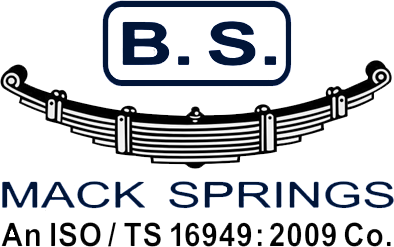
#Parabolic Suspension#Parabolic#Parabolic Leaf Springs#Leaf Springs#Parabolic Leaf Springs Suppliers#Suppliers#Parabolic Leaf Spring Manufacturers#Manufacturers#Spring Manufacturers#Parabolic Leaf Spring Suspension#Parabolic Springs Manufacturers#Parabolic Spring Suppliers#parabolic leaf springs India#Suppiier#mack springs
0 notes
Video
youtube

The aim of bogie springs is to reduce the forces and vibrations, to avoid derailment and to uncouple vibration and noise between the wheelsets and the vehicle body.For more information about bogie springs please visit us : https://www.sonicoleafsprings.com/bogie-springs.html.
0 notes